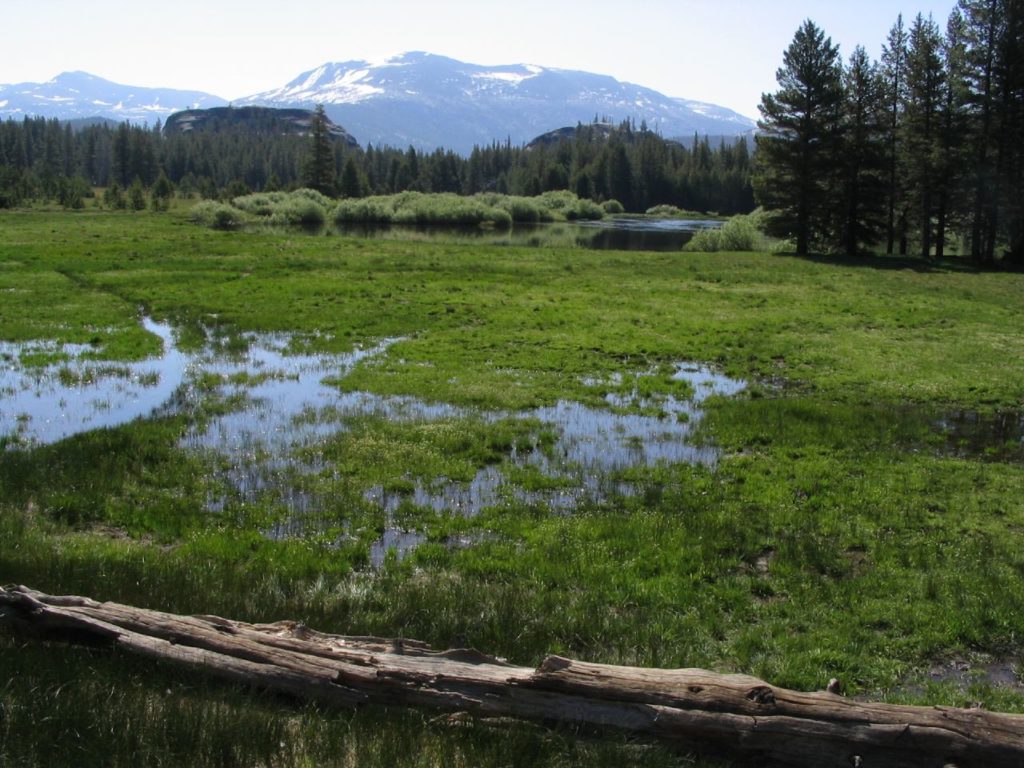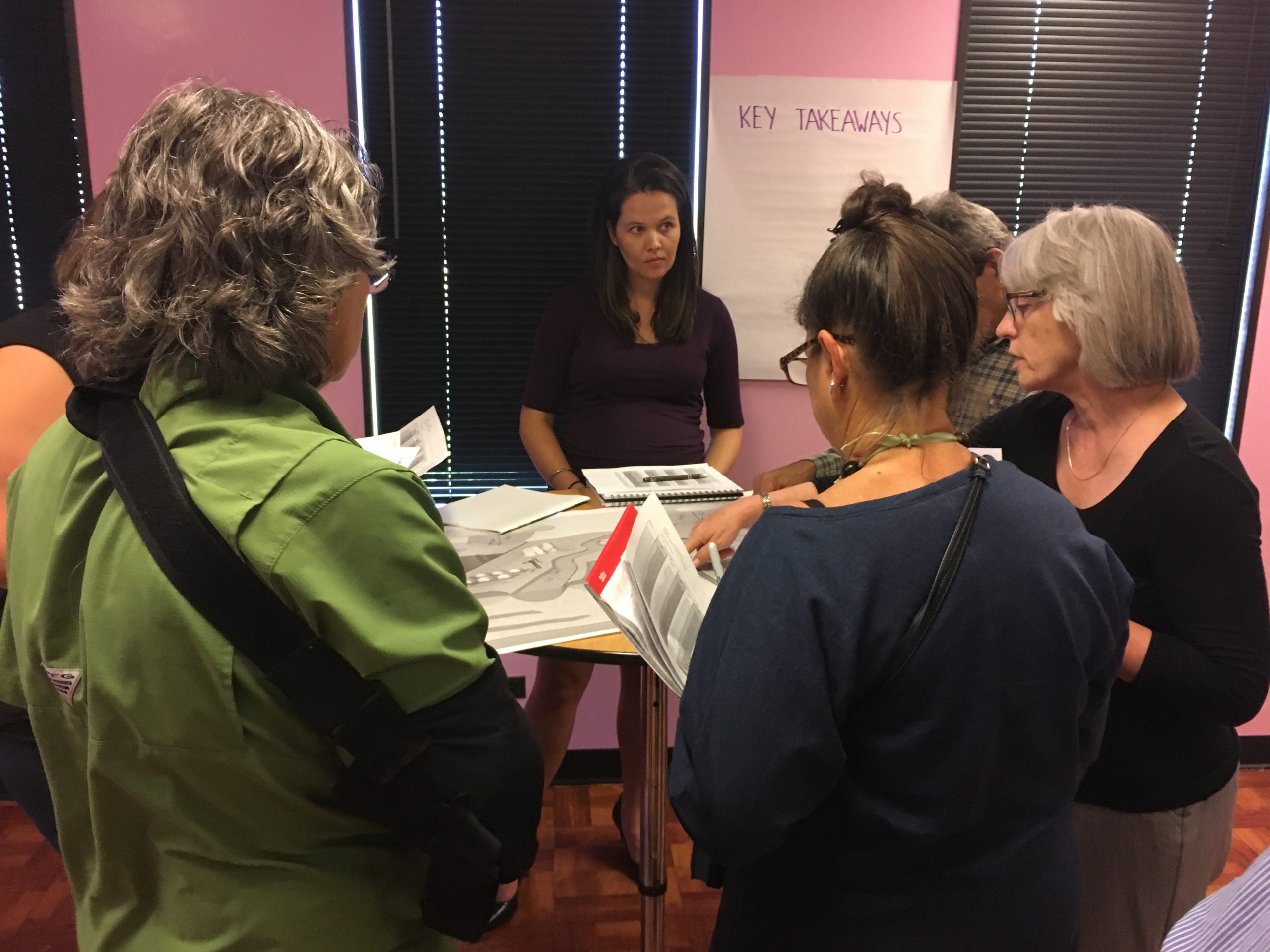Water Foundation (WF): Let’s start at the beginning. What is the NGO Groundwater Collaborative?
Jennifer Clary (JC): We’re a group of nearly 150 environmental, environmental justice, community-based, and Tribal advocates who are interested and engaged in the sustainable and equitable management of groundwater at both the local and state level. We initially formed during the development of California’s Sustainable Groundwater Management Act (SGMA) to collectively advocate for stronger protections for communities, the environment, and the general public in the development of the legislation. Since then, the Collaborative has been an information-sharing platform that allows members to share problems and potential solutions and identify key issues to bring to the attention of state regulators.
Emily Finnegan (EF): That’s right. NGOs and community-based groups don’t have the resources that groundwater sustainability agencies (GSAs) and well-equipped stakeholders like water districts do, including paid staff to attend every meeting and access to engineers, lawyers, accountants, and other experts to inform decision-making. The Collaborative offers tools, education, and network development that help level the playing field. We’re also connecting different groups to elevate common concerns to the state and holistically improve GSAs’ plans to protect groundwater that’s used as drinking water for millions of people and to sustain ecosystems throughout the state.
WF: You’ve both spoken about the need for active community participation in order to effectively implement SGMA. Can you speak to that a little more? What is the role of public engagement in land and water management and policies like SGMA?
EF: Community participation is necessary to ensure that land use and water management decisions reflect the needs and interests of the communities those decision-making processes are supposed to serve.
JC: An informed populace is necessary when instituting such large-scale policy efforts. The general public will pay, either directly or indirectly, for sustainable management of our water resources, and therefore they must have a voice in how plans are developed and priorities are established.
Stakeholders who are directly impacted by changes in land and water management need to have a seat at the table to ensure that their interests and experience can inform the planning process and make their needs heard.
For example, lowered groundwater levels in the last drought left more than 10,000 Tulare County residents without water, including 1,000 homes in the community of East Porterville, and cost California tens of millions of dollars to provide emergency aid and find new water supplies. Impacts of this scale or larger can be expected from many, if not most, of the plans adopted in the San Joaquin Valley.
EF: SGMA specifically and legally requires that all groundwater users and uses are considered in how the legislation is implemented. No public agency can possibly have a solid handle on all of the interests and needs of every user. We need robust public engagement to share those perspectives.
JC: Right, for example, a plan developed with only large agricultural interests at the table will be more likely to support measures that continue unsustainable levels of pumping and allow current management practices to continue unchecked.
On the other hand, a plan created with the input of people who rely on shallow groundwater wells may consider changes in current practices at an earlier stage in order to protect water for domestic well users, small farmers, and ecosystems that depend upon shallow groundwater – like habitat in or near wetlands, streams, and rivers. A planning process that shares power among stakeholders has the potential to look at costs and benefits in a way that shares the burden and benefit of water management decisions fairly.

Shallow groundwater sustains vegetation in Tuolumne Meadows, Ken Lund.
WF: What needs to change for public engagement to happen and help achieve this kind of power sharing?
JC: As Emily mentioned, the SGMA statute requires GSAs to “encourage the active involvement of diverse social, cultural, and economic elements of the population within the groundwater basin prior to and during the development and implementation of the groundwater sustainability plan.”
But, the California Department of Water Resources, in drafting regulations to implement the statute, did not interpret it in a way that provides clear direction to local agencies. As a result, plans are all over the place in their engagement of local stakeholders and groundwater users.
To achieve the spirit of the law, historically underserved and underrepresented communities must have the resources, capacity, and authority to not just participate in, but also influence local discussion and decisions.
There are two distinct forms of outreach that are needed. First, the public should be engaged at their convenience, not that of paid staff. Outreach efforts should incorporate multiple media options like TV, radio and social media, take advantage of public meetings about other issues, and include direct outreach to local community organizations that work with audiences like those who speak a language other than English or who work in low-wage jobs. Funding should be provided to community-based organizations who can then provide stipends for impacted communities to participate in these processes and assistance to help them interpret technical materials.
Second, and more importantly, decision-makers must have a mechanism for seeking input and including it in project planning and implementation. That requires a change from the status quo where those who have power keep it and use it for their own benefit. For instance, a process that asks community members what their needs and priorities are, then incorporates those responses into assessments and planning, would mean that community needs are considered from the outset.
Having a feedback mechanism throughout planning and implementation, meaning you check back with the community regularly, is also essential.
EF: The Collaborative is trying to disrupt that way of working. State agencies have a responsibility to engage the public, and groups like the Collaborative offer spaces to help state and local decision-makers engage diverse local perspectives.
WF: As you discuss this in the Collaborative, what recommendations do you have for community members and other NGOs who want to get involved?
EF: Let’s be clear. The responsibility is on public agencies to inform the public of its decision-making processes. But when public agencies fail to adequately inform the public, community members must self-advocate for their interests to be recognized. NGOs can help convene community members to elevate their collective voice, and can also help educate the public about policy development and implementation.
JC: Active individuals and organizations have the opportunity to not just represent their communities, but also to ensure that other underrepresented groups are included. Resources are always going to be a barrier to full participation. In the case of SGMA, for example, there are 265 GSAs and not nearly enough advocates to track every planning process. So, we have to get out of our comfort zone and realize that in order to be successful we must engage advocates with whom we may not be in full agreement, but with whom we can partner to advance our joint priorities, like protecting shallow drinking water wells at the same time we ensure sufficient water in our local rivers and streams.
WF: Tribes are also members of the NGO Groundwater Collaborative. How are they participating in processes like SGMA?
EF: Tribal governments are sovereign nations. It’s required by federal and state law that local public agencies engage them in formal consultation on any policy or activity that may impact Tribal interests.
Tribes have significant history, culture, and environmental understanding that can contribute greatly to California’s local and regional water and land-use efforts, if they so choose. Tribes can also bring together a strong political contingency to advocate for decisions they support, or oppose decisions they do not.
WF: Thanks so much to you both. Where can people go to learn more about the NGO Groundwater Collaborative and find resources to improve public engagement in water and land-use decision-making?
EF: You can find out more by visiting our website: https://cagroundwater.org. If you’re interested in becoming a member of the Collaborative, please contact me at efinnegan@lgc.org.
The NGO Groundwater Collaborative is also co-hosting a series of webinars on the connections between SGMA and the Integrated Regional Water Management (IRWM) program, in coordination with Maven’s Notebook, the IRWM Roundtable of Regions, and DWR. The first webinar in the series, “Successful Collaboration Between SGMA and IRWM” will take place on September 23 from 12-1:30pm. Find out more and register here.
Lastly, Local Government Commission is facilitating a virtual Summit, “Ensuring Equitable Involvement in Regional Water Planning,” on October 8th, 13th, and 14th to share strategies for engaging marginalized communities in regional water management as learned through local implementation of the IRWM Disadvantaged Communities and Tribal Involvement Program. Over three days, Tribal leaders, community members, and practitioners will highlight best practices and resources developed through this program, and elevate how lessons learned from IRWM underrepresented and tribal community engagement can be shared across other water planning efforts, including SGMA. Find out more on the Summit website and register here.
